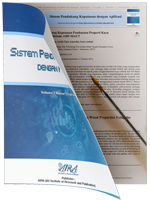Author Guidelines
Important Notes to Prioritize Your Manuscript Submission
When submitting, you must upload at least three documents as shown below. The minimum number of references is 25 scholarly articles, preferably from reputable journals.
-
Manuscript File (Blinded Version)
-
The manuscript file must have all author names and affiliations removed. To remove hidden metadata:
File > Info > Check for Issues > Inspect Document. Select all checkboxes, click “Remove All,” then “Close” and save.
-
-
Cover Page
-
The cover page should contain the manuscript title, the name(s) of the author(s), institutional affiliation(s), corresponding email address(es), abstract, keywords, and a brief biography accompanied by a photo (maximum height 2.5 cm).
-
-
Other Supporting Files (Optional)
Article Categories and Format
The article should be classified into one of the following categories:
- Research Article
- Technical Article
- Conceptual Development
- Case Study
The article should be between 6 and 15 pages in length and submitted in MS Word format (.doc or .docx). Use the provided template with Heading 1 style for all section headings — you can download it from this Google Drive folder. Employ the IMRaD structure.
Manuscript Preparation Guidelines
It is imperative that authors ensure the originality and integrity of their article by conducting thorough plagiarism checks. Articles that have been submitted or published elsewhere cannot be submitted to Decision Support System with Application. Authors are advised to review their institution’s policy on this matter.
Italicize any words or terms that are not in English. When referencing others’ work, use reference managers such as Mendeley, Zotero, or EndNote to ensure proper citation management. The preferred citation style is IEEE. Citations at the beginning of a sentence should appear in parentheses, e.g., (1).
Title
The title should be concise (maximum 20 words), clear, and informative. It must contain the main keywords of your study to enhance discoverability, and avoid unusual abbreviations or jargon. A well-crafted title accurately reflects the scope and contribution of your research.
Abstract
The abstract should be approximately 250 words. It must provide a brief background, state the research objectives, summarize the methodology, highlight the main results, and present the conclusions and implications. The abstract should be self-contained and not include citations or undefined abbreviations.
Keywords
Provide 3–5 keywords or phrases in alphabetical order, separated by commas. Keywords should accurately reflect the main topics of the article and aid in indexing and searchability.
Introduction
A comprehensive state of the art of the subject should be presented, accompanied by a discussion of relevant literature and the theoretical concepts underpinning it. A concise overview of the broader context may be incorporated. Include a minimum of five recent related works to substantiate the novelty of the research. The introduction should be a concise overview of the research question or hypothesis and end with clearly stated research objectives or questions.
Methods
The methods section should provide sufficient detail to enable replication by independent researchers. Summarize and cite previously published methods where appropriate. Describe any modifications to existing methods. Include information on participants (demographics, sample size, selection criteria), experimental design (procedures, surveys, interviews, observations), data collection techniques, instruments used, and data analysis methods.
Results and Discussion
Present the results in logical order, with the most significant findings first. When using tables or figures, place titles above tables (capitalize each word) and captions below figures. Do not repeat table or figure content in the text. Instead, provide a concise summary. Focus on novel aspects, discuss limitations, and highlight unresolved issues. Describe how data were generated and discuss relationships to hypotheses and prior research. State theoretical or practical implications.
Conclusion
The conclusion must be linked to the title and research objectives. Restate main findings without repeating the abstract or discussion. State contributions to decision support systems or scientific knowledge. Suggest directions for future research. Use full paragraphs rather than bullet points.
Acknowledgements
Acknowledge individuals who contributed but do not meet authorship criteria. Only list names, not roles. Disclose all sources of external research funding.
References
Decision Support System with Application prefers citations of journal articles, research reports, and conference proceedings to highlight research novelty. Use Mendeley, Zotero, or EndNote for reference management. A minimum of fifteen references is required. Check references for completeness and consistency. Cite references in the text using square brackets, e.g., [1]. Format references according to IEEE style.







